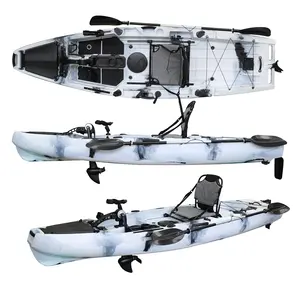Kayaking Materials: An Essential Overview
Kayaking is not only an exhilarating water sport but also a pursuit that demands the right materials for safety, performance, and enjoyment. Choosing the right kayaking materials can significantly impact your experience on the water, whether you are a beginner or a seasoned paddler. From the construction materials of the kayak itself to the gear and accessories, understanding the various types of kayaking materials is crucial for selecting the best options for your needs.
Types of Kayaking Materials
When considering kayaking materials, you'll find that each component of kayaking gear is made from specific materials suited to its function. Here are some of the common types of kayaking materials:
- Kayak Hull Materials: The hull of kayaks is typically made from materials such as:
- Polyethylene: A popular choice for its affordability and durability; resistant to impacts.
- Fiberglass: Known for its lightweight and strength, providing excellent performance on the water.
- Kevlar: An advanced option that offers high stiffness and low weight, ideal for competitive kayakers.
- Inflatable Materials: Made from durable PVC or Hypalon, allowing for easy storage and transport.
- Paddles: Mainly constructed from:
- Aluminum: Cost-effective and sturdy, suitable for recreational paddling.
- Fiberglass and Carbon Fiber: Lightweight options that enhance efficiency and speed.
- Safety Gear: Including items such as PDF and helmets, made from:
- Nylon: Often used for buoyancy aids due to its lightweight and comfortable nature.
- Polyester: Utilized in helmets for its impact-resistant properties.
Function, Feature, and Design of Kayaking Materials
Each kayaking material serves specific functions while boasting unique features and designs that contribute to overall performance:
- Kayak Hulls: Designed to enhance stability and maneuverability.
- Rocker Profile: Determines how a kayak turns; a pronounced rock helps with quick turns, while a flat hull improves tracking.
- Width: Wider kayaks offer greater stability, while narrower options yield speed and efficiency.
- Paddles: Engineered for optimal power transfer and comfort.
- Blade Shape: Affects the amount of water displaced; wider blades promote power, whereas narrower blades increase speed.
- Length: Selecting the correct paddle length is vital based on paddle stroke style and the kayak's width.
- Safety Gear: Crafted for maximum protection without sacrificing comfort.
- Buoyancy: Must meet safety standards to ensure floatation in emergency situations.
- Fit and Design: Must allow for unrestricted movement while providing adequate protection.
Advantages of Quality Kayaking Materials
Investing in high-quality kayaking materials brings numerous benefits, enhancing your overall experience:
- Durability: Quality materials withstand the rigors of regular use and the elements, ensuring long-lasting performance.
- Performance: Specialized materials improve speed, efficiency, and handling on water, allowing for a smoother ride.
- Safety: Reliable materials in safety gear significantly reduce the risk of injury during paddling and in emergencies.
- Comfort: Well-designed materials ensure ease of use and maximize enjoyment while minimizing fatigue.
Choosing the right kayaking materials not only enhances your safety and comfort but also elevates your entire kayaking experience. So gear up wisely and embark on your next adventure with confidence!













































